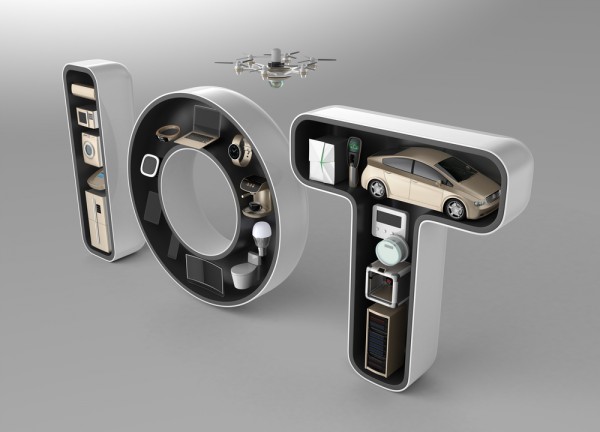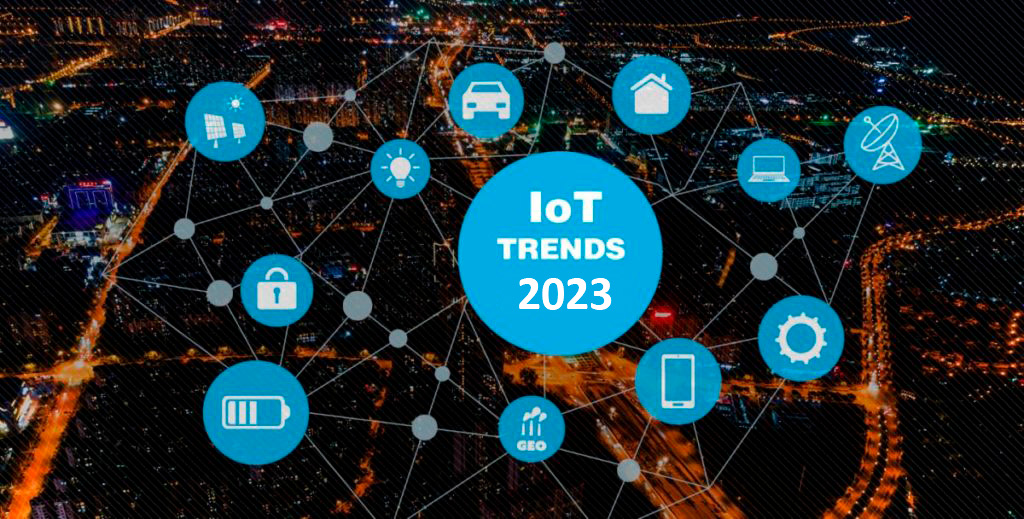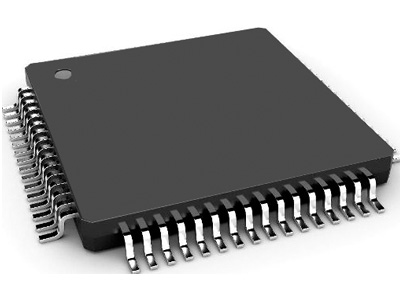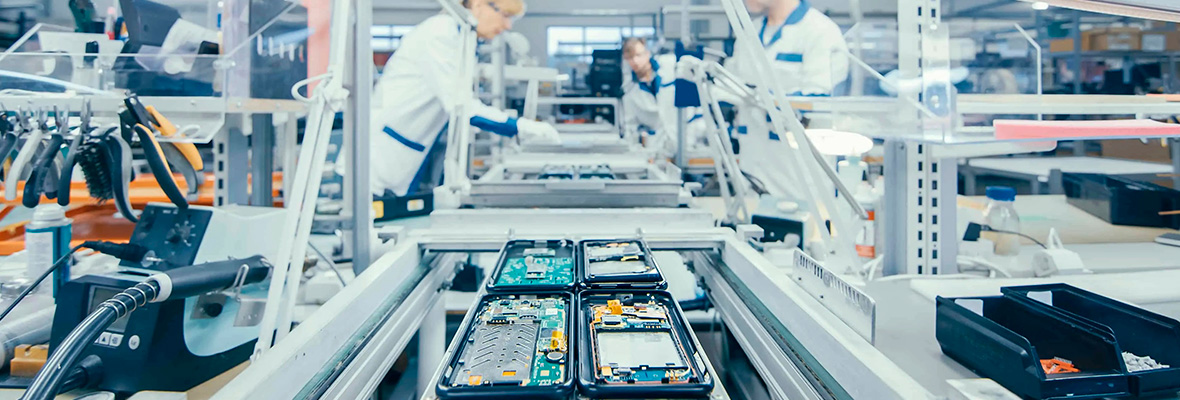
IoT Technology Trends in 2023
A little history of the emergence of IoT
The emergence of the Internet of things was predicted by the famous physicist Nikola Tesla back in 1926. In his view, it was the radio that was supposed to become a “big brain” to which various devices could connect. It happened, but not so fast. John Romkey, one of the creators of the TCP/IP protocol, tried to connect a Sunbeam Deluxe Automatic Radiant Control toaster to the Internet via a TCP/IP network. The connection worked and he was able to manage it through a simple SNMP MIB infobase. At that time, only one function was available - it was on and off. So, in 1990, the first Internet Thing appeared.
Today, we now have much more control over the devices we use, and many of these devices work as battery-powered. This is the beginning of the emergence of "smart" homes, "smart" cities, "smart" industries.
IoT is still at the heart of sustainable development
In 2022, it was noticed that along with the increased interest among investors in IoT solutions, the business value of such products in the market is increasing. That means, people are not afraid to invest resources in technology, as it was in the early beginning. Initially, in cities began to appear, "smart" lighting systems, "smart" parking places and many other "smart" things. Then, they moved on and began to offer technology to agriculture and manufacturing. Smart devices that monitor the state of machines, optimize processes and manage resources have quickly proven their effectiveness and justified the investment.
The key goal remains the same: the integration of the IoT into all viable models of a sustainable economy. This will allow receiving maximum data to understand all processes. Experience in the IoT field confirms partnership plays an important role. To maximize the capabilities of IoT devices it is necessary to go a long way from tests, upgrades and errors, as well as to establish close cooperation with all related companies: GSM providers, component suppliers and electronics manufacturers.

Peak of "cloud" technologies
IoT is about Big Data that needs to be stored, analyzed, and processed. What does the cloud do well? After the devices have collected information, it is sent to the cloud server, where it is further processed. The time has come when "cloud" technologies are used as infrastructure, platforms or software.
Artificial intelligence, smart sensors and meters are closer than we think
Artificial intelligence is gradually becoming ubiquitous, although it remains invisible to us. There is no exact date on the Internet when AI appeared. And it can be assumed that there will be no date when it will disappear. However, its emergence is due to advances in areas such as computing power, machine learning and the Internet in general. If we have already adopted “cloud” technologies, then there is still a distrustful attitude towards AI.
As for the areas of application of smart technology, Technoton Engineering has developed smart sensors and meters for automotive and industrial applications. With their help, you can identify defects in working systems before they have a negative impact. And this may be engine damage or a negative change in secondary auxiliary systems. This technology eliminates unplanned production downtime, estimates damage levels and remaining uptime. In turn, the support team makes maintenance on time. Smart sensors and meters are suitable for machines and mechanisms that are constantly in operation. These include pumps, fans, compressors, etc.
5G IoT
2G/3G IoT took a backseat as 4G Internet of things connections increased by 24% due to the widespread adoption of Cat6, Cat4 and LTE Cat1-based chipsets. Next comes 5G IoT. Experts say that the 5G mobile network will help solve problems with connection speed, data transfer and increase network reliability. And this, in turn, will have a positive impact on IoT, since much of this technology depends on connectivity.
Such technologies are useful only if the community of developers and businesses are ready to support and develop a technological culture. This requires both a reduction in the price of 5G IoT modems and more affordable tariff plans from a GSM provider for telemetry traffic.
What should a beginner IoT developer pay attention to in 2023?
Programming languages C and C++
The syntax of C/C++ is quite complex, but you will have to learn it. The languages of this family are actively used for the efficient coding of embedded systems that interact with the underlying hardware. The memory handling and compute optimization capabilities of C/C++ allow you to get the most performance out of under-resourced devices. If you do not have practical programming skills, you need to master the basic things:
- Binary and hexadecimal number systems.
- Constants. Data types.
- Operators and expressions of C language. Functions (declaration, call).
- Variables. Data types (primitive types, strings, structures).
- Control operators.
- Functions. Working with memory.
- Data types. Fundamentals of the object-oriented approach to programming (C++). Custom data types.
- Structure of a C program.
- Preprocessor.
- IDE and development tools.
- C/C++ Standard Libraries.
You can also develop software for IoT devices in other programming languages: Java, Python, Javascript, Swift, PHP, etc.
Linux, FreeRTOS & other Embedded operational systems (OS)

Various embedded operating systems and even general-purpose systems are used to control smart devices, many of which are based on GNU / Linux and FreeRTOS. A future smart device engineer needs to know the basics of working with this OS. If you've never encountered Linux, it's worth picking up a distribution and filling in the gaps. Pay attention to the following topics:
- OS installation.
- System setup and familiarity with the command line interface.
- Users. User and group management.
- OS loading and processes.
- OS file system device. The concept of file and directory.
- Introduction to bash scripting. crontab and at task schedulers.
- Manage packages and repositories. Fundamentals of network security.
Microcontrollers

Many IoT applications require a microcontroller (MCU) connected to the Internet via a modem. It integrates compute modules as well as memory and programmable I/O peripherals, all in a single integrated circuit. MCUs differ from microprocessors used in personal and embedded computers in that they are specifically designed for embedded applications where computing is not the only purpose.
While microcontrollers are less capable than a standard computer processors, their low cost makes them a more practical option for adding capabilities to an object, space, or process.
To determine which microcontroller will work best with your application, you need to know some of its key features:
- Bits (fuses) - a tool for fine-tuning the microcontroller. It is needed to change the frequency and source of the clock signal, enable or disable timers, and much more.
- RAM - This is a fast-access RAM that does not retain data in the absence of power. All microcontrollers come with a certain amount of memory. The bigger it is, the better, but the added RAM increases the cost of the MCU.
- Flash memory - This is the memory of the microcontroller, in which data is stored in the absence of power. A kind of offline storage.
- GPIO – General purpose input/output contacts. They are used to connect sensors and actuators to the MCU. The number of pins can vary from one to hundreds, depending on the microcontroller model.
- Connectivity. The board and the application itself can connect to the Internet via Wi-Fi, Ethernet, or other interfaces.
- Energy consumption. Power consumption is critical for applications with connected sensors, especially when your device needs to use a rechargeable battery or conventional batteries.
There are many good microcontrollers out there. Among others, we can distinguish controllers of the STM32 family, suitable for both beginners and professionals. They have good performance and work with most modern sensors and instruments. In addition to microcontrollers, higher-performance embedded computers can also be used to create IoT solutions.
Fundamentals of electronics and circuitry
To work with various devices and microcontroller boards, you will need a basic understanding of electronics and circuitry. You need to read materials on the following topics:
- Circuitry. Familiarity with the main components and tools.
- Calculations of electronic connections.
- Transistors.
- Connecting and managing loads.
- Current. Power supplies and filters. Galvanic isolation.
- Linear converters. Modern LDOs.
- Operational amplifiers.
- Logical elements.
Work specifics
To program the hardware, you need three tools: an IDE, a programmer debugger, and an evaluation board from the manufacturer. Other IDEs include:
- For ARM architecture - Embedded Workbench by IAR Systems and uVision by Keil.
- For AVR architecture - CodevisionAVR and AVRstudio.
A programmer-debugger is a device that is connected to the device board via USB to fix errors in the software. The evaluation board serves as a training ground for prototyping and for implementing and testing new ideas. To start working with boards, you will also need practical soldering skills.
A little about security
The IoT developer needs to keep in mind that smart things are not only extremely convenient, but also vulnerable - they give cybercriminals entry points into the user's privacy. Since the internal functionality of the device remains unchanged, capture is difficult to detect. In a persistent denial-of-service (PDoS) attack, IoT devices can be damaged enough to require replacement. Regular security monitoring and firmware updates are a must, so the following topics should be explored as a developer:
- Access control systems.
- Authentication and authorization mechanisms.
- Encryption.
Production

When making a commercial IoT product, it is important to maintain high-quality standards based on previous user experience. Quality and reliability are paramount and should be part of any developer's mentality.
If you have not previously experienced the introduction of a commercial product to the market, then it is worth considering the need to invest in the body of your product. Making a mould often costs between $5,000 and $15,000. If your budget is limited, then it is worth using existing cases on the market.
Do you want to bring your IoT product to market, but don't know where to start? What to do?
You can learn on your own (a long way) or contact a company that specializes in such developments (a quick way). Plus, you need to consider that when developing IoT devices on your own, in any case, you will have to involve narrow specialists or consultants. Technoton Engineering will help to develop an IoT product, as well as solve such problems as:
- Debugging, upgrading and optimizing firmware.
- Energy optimization for battery-powered hardware.
- Implementation of connectivity and establishing communication between the device and the web server.
- Creation and optimization of a network between connected devices.
- Development of a mobile application and establishing a connection with an IoT device.
You are welcome to get in touch with us by leaving a request.
